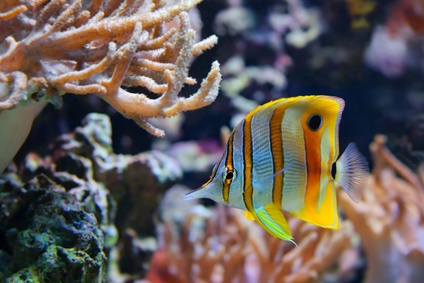Ichthyology Diploma Level 3
- The Ichthyology Diploma course examines the basic physiology, diversity and evolution of fishes.
- Examples from diverse groups are used in order to provide a good overview of fish biology.
- This comprehensive 3 unit course includes information about evolution, diversity, reproduction, communication, migration, respiration, anatomy, physiology, habitats and ecology.
(Course cost is all inclusive of tutoring fees, assessments, materials and course registration)
*You will have access to the course for 9 months only. You can purchase course extensions.
Unit 1
Fish Evolution, Biology and Buoyancy
This unit covers a broad overview of fish evolution using different species for illustration and then looks at the variety of methods that fish engage to maintain buoyancy.
Learn about:
a) A broad overview of fish classification, evolution and biology.
b) Fish evolution in relation to geographical time scales using different species for illustration.
c) The variety of methods that fish have evolved to ensure they maintain buoyancy, looking specifically at fin design and the swim bladder.
Unit 2
Communication, Reproductive Strategies and Migration
This unit explores communication methods within ichthyology and the roles they play in predator avoidance and species recognition. It looks at the evolution of fish reproduction and the main tools utilised for migration.
Learn about:
a) Communication within ichthyology, looking specifically at the use of chemicals (pheromones), sound, vision and colour pigments and the significant roles they play in predator avoidance and species recognition.
b) Fish reproduction and how diverse methods and strategies of breeding have developed in the various species, and how this enables them to adapt to environmental factors over time via natural selection.
c) The main tools for fish migration – sense of smell, geomagnetic force detection, navigation via topographical landmarks and navigation via detection of water salinity, and the three main migratory groups – potamodromy (within freshwater), oceanodromy (within saltwater), and diadromy (between freshwater and marine).
Unit 3
Respiration, Habitat and Sensory Systems
This unit looks at the variety of fish respiration methods, the adaptations required to live in extreme environments and the anatomy and physiology of their sensory systems.
Learn about:
a) An overview of the variety of different ways in which fish obtain oxygen and then distribute it around their bodies, looking in particular at the several ways that gills are adapted in various species.
b) The polar and deep-sea environments inhabited by fish and the physical characteristics and adaptations that these environments encourage in aquatic life, illustrating the close association between biology and the environment.
c) Fish anatomy and physiology in relation to their sensory systems, including those of the acoustico-lateralis systems, the olfactory, electro-detectory and visual senses.
We offer a selection of accredited and employer recognised courses specifically designed for careers working with animals.
If you have any questions about our courses, please contact us.
We’ve assisted many people to achieve their goal to work with animals. Read more about our 5-star reviews and student success stories.
Gain relevant training to achieve your goal to work with animals.


